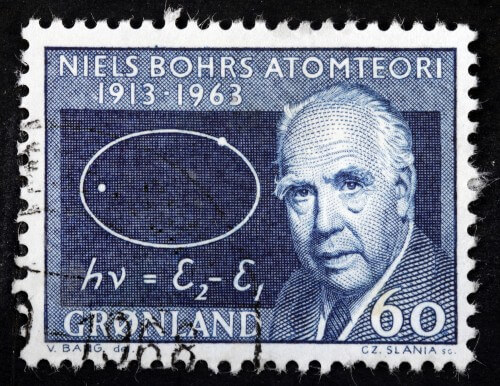Today (7/10) 130 years ago, Niels Bohr was born, a Danish physicist of Jewish origin, one of the most influential physicists of the 20th century and the greatest contributor to the understanding of the structure of the atom and the development of quantum mechanics.

Bohr worked early on with G.G. Thomson (the discoverer of the electron) and later with Ernest Rutherford (the experimenter who first understood the structure of the atom as we know it today). In 1913, Bohr formulated the model of the atom, which for the first time gave an answer to all the information and results obtained in various experiments, through a mathematical formulation of the movement of the electrons in the atom. In 1922 he was awarded the Nobel Prize in Physics for this work.
In the period between the world wars, Bohr was engaged in the development of quantum mechanics. He headed the group of researchers called the "Copenhagen School", which advocated the revolutionary and controversial approach according to which physical quantities are defined only after they have been measured; Against this background, a heated debate developed between him and Albert Einstein and his supporters (Einstein said, for example, about the Copenhagen commentary in mockery: "When I close my eyes, does the moon disappear?"). As part of the controversy, Erwin Schrödinger (Einstein's friend and supporter) formulated the famous experiment with the cat, in which he claimed that if the "Copenhagen interpretation" is correct, then at a certain time the cat will be alive and dead at the same time.
Einstein himself tried for a long time to disprove Bohr's theory, especially during the Fifth Solvay Conference (which convened in 1927 to discuss mainly quantum theory). So Bohr presented Werner Heisenberg and their supporters with a series of thought experiments designed to contradict their ideas - and in one case, Bohr almost gave up, until a small error in one of Einstein's assumptions was discovered. However, during the 30s and early 40s, when more experiments were conducted and their results matched the predictions of quantum mechanics, the theory was accepted without question.
After the outbreak of World War II and the occupation of Denmark by Germany, Bohr fled to Sweden, after a certain period in which he tried to continue working in Denmark. He heard from his former student, Werner Heisenberg, about Nazi Germany's plans to develop an atomic bomb (of which Heisenberg was the leader). With the help of British intelligence, he was smuggled out of Sweden and reached the USA, then alerted President Roosevelt and British Prime Minister Churchill about the German plans. This warning, and that of Albert Einstein several years earlier, caused the Allies to speed up the "Manhattan Project" of developing the atomic bomb and intensify the air attacks against German research and industrial facilities, in order to thwart the German plan.
After the war he returned to Denmark, and in his last years engaged in activities to prevent the spread of nuclear weapons.
By the way, 13 years after his death, his son also won the Nobel Prize for Physics.
The following film describes the principles of quantum mechanics, including the theories of Niels Bohr:

5 תגובות
My father is right, I accept your correction
It was Niels Bohr's son Oga Bohr
In Wikipedia at least it is explicitly written that it is his son and not his father. About his father it was only written that he was a well-known physicist.
Not Niels Bohr's son but his father Christian Bohr won the Nobel Prize - for pH regulation caused by carbon dioxide in the blood circulation
Please be precise - not typical for the site
I'm not sure they met. The play is about an ideological meeting/confrontation. Should the scientist give up his huge passion for research, when his research is used as a political movement for malicious purposes. In the play, Heisenberg allegedly offers Niels Bohr involvement and Niels Bohr rejects the offer. I don't know how much of this has a historical basis. After the war the world accepted Heisenberg, because his scientific stature is huge. The world also received Werner von Braun - the rocket scientist thanks to whom there are missiles for space exploration and mass destruction. The moral-science meeting is the message in the show and it is interesting.
There was a show at Hakmari about the confrontation/meeting between Niels Bohr and Werner Heisenberg regarding the development of the atom. Luckily for us, the Germans made a mistake in calculating the amount of enriched uranium required 10 times upwards.
Another point worth noting is the "Copenhagen interpretation" is the name given to Niels Bohr's interpretation of the wave function in non-relativistic quantum theory, as having the character of a spatio-temporal and energetic-momentum distribution function. This is a huge leap in thinking. The wave function is no longer a meaningless quantity but a probability of finding a particle at a certain place in space-time or at certain values in energy-momentum space. Heisenberg donated to us: a. The matrix representation of the quantum theory developed at the same time as the Schrödinger equation by Schrödinger. B. Heisenberg's uncertainty principle. Two huge contributions.
Later, when the special theory of relativity was introduced into the quantum theory and today also the general theory, there is a problem in the interpretation of the distribution function, but in my opinion it will be solved in the future, or it was solved and I didn't have time to read.